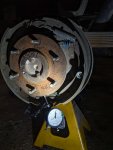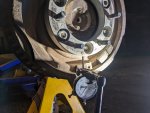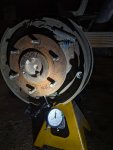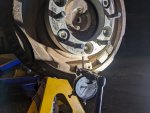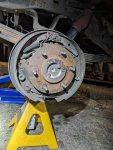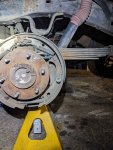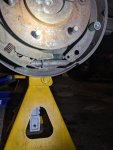- 137
- 151
- 43
- Location
- Los Angeles/CA
I was driving my 1009 the other day and the brake pedal got pretty squishy. Upon returning home I noticed the reservoir for the rear brake circuit with completely empty of fluid. I haven't found an obvious leak which is surprising, but there has to be a leak somewhere and I'm sure I will find it after I clean up everything and refill the system and run a few miles.
What surprised me is I didn't get the brake warning light on the dash. If I push the brake pedal all the way to the floor with the engine running the light comes on, but as soon as I let off the pedal even slightly the light goes out. I would have expected the brake warning to come on and stay on with the front circuit mostly empty of fluid but I'm not actually certain how the sensor in the proportioning valve works and would appreciate any insights you might have
What surprised me is I didn't get the brake warning light on the dash. If I push the brake pedal all the way to the floor with the engine running the light comes on, but as soon as I let off the pedal even slightly the light goes out. I would have expected the brake warning to come on and stay on with the front circuit mostly empty of fluid but I'm not actually certain how the sensor in the proportioning valve works and would appreciate any insights you might have



